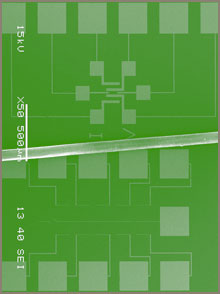Materials Physics Track
Turning science into technology
Materials physics is a field of study focused on creating new technological developments based on cutting-edge scientific advances. The materials created in this field range from nanotechnology to advanced polymers, created for a variety of purposes. This is a broad field of study, and there are many opportunities for today’s students to contribute using these exciting new technologies.
Career options
A physics degree, with an emphasis in materials physics, will prepare you for a career in any of the following areas:
- Defense industry
- Novel Electronic materials
- Structural composites
Graduate options
Our department offers a Master of Science in Materials Science, allowing students to continue their studies and research here at Missouri State. Students with a physics degree, with an emphasis in materials physics, are well prepared for any science-related master’s degree here or elsewhere. If you are an undergraduate student, you should also consider our accelerated master’s program.
Career resources
To help you prepare and search for jobs, the Missouri State Career Center provides a database of current openings, tips for preparing your résumé and on-campus interview opportunities. The Career Center also compiles information about what you can do with a physics degree.
Also, our department encourages students to use resources like Physics Today and the American Physical Society as they look for jobs in their field.

A human hair is measured against a micro-electromechanical systems (MEMS) device that has been manufactured at the Roy Blunt Jordan Valley Innovation Center. MEMS devices are part of a technology that makes machines at the microscopic level that can think, communicate and react to situations. The image showcases the abilities of nanotechnology, the engineering of functional systems at the molecular scale. One nanometer is one billionth of a meter — one strand of human hair is about 100,000 nanometers in diameter.